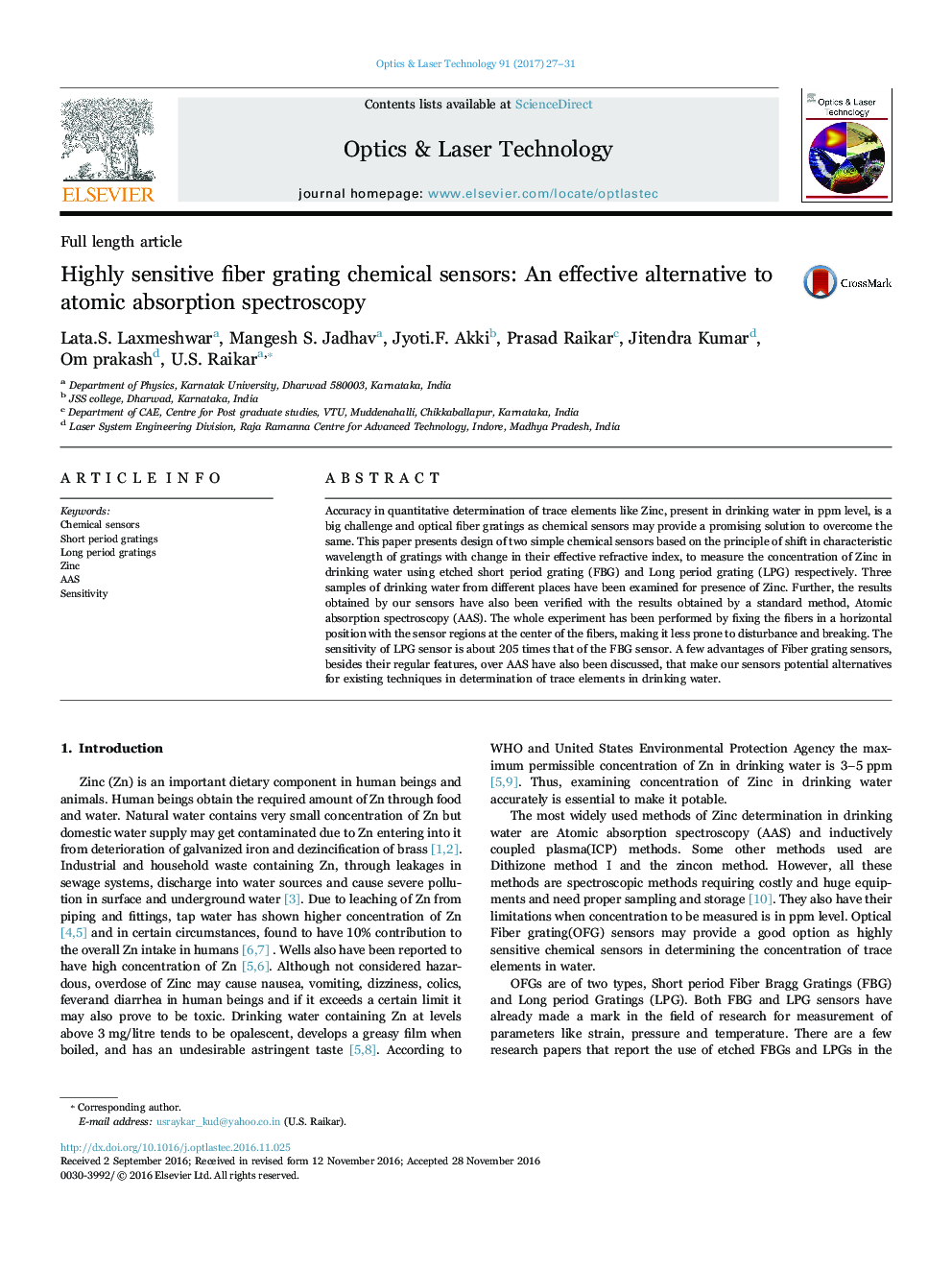| Article ID | Journal | Published Year | Pages | File Type |
|---|---|---|---|---|
| 5007148 | Optics & Laser Technology | 2017 | 5 Pages |
Abstract
Accuracy in quantitative determination of trace elements like Zinc, present in drinking water in ppm level, is a big challenge and optical fiber gratings as chemical sensors may provide a promising solution to overcome the same. This paper presents design of two simple chemical sensors based on the principle of shift in characteristic wavelength of gratings with change in their effective refractive index, to measure the concentration of Zinc in drinking water using etched short period grating (FBG) and Long period grating (LPG) respectively. Three samples of drinking water from different places have been examined for presence of Zinc. Further, the results obtained by our sensors have also been verified with the results obtained by a standard method, Atomic absorption spectroscopy (AAS). The whole experiment has been performed by fixing the fibers in a horizontal position with the sensor regions at the center of the fibers, making it less prone to disturbance and breaking. The sensitivity of LPG sensor is about 205 times that of the FBG sensor. A few advantages of Fiber grating sensors, besides their regular features, over AAS have also been discussed, that make our sensors potential alternatives for existing techniques in determination of trace elements in drinking water.
Related Topics
Physical Sciences and Engineering
Engineering
Electrical and Electronic Engineering
Authors
Lata.S. Laxmeshwar, Mangesh S. Jadhav, Jyoti.F. Akki, Prasad Raikar, Jitendra Kumar, Om prakash, U.S. Raikar,
